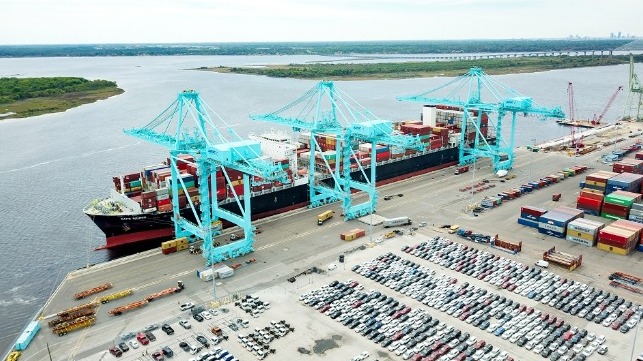Florida Ports Promoted as Alternative to Congestion and Bottlenecks

Florida has become the latest in a series of regional ports in the U.S. seeking to highlight availability as an alternative to the congestion and backlogs at the primary seaports in California and now increasingly also the U.S. East Coast. In an aggressive campaign, the Florida Ports Council is promoting Florida’s fifteen public seaports as an answer to the global supply chain crisis providing an opportunity to save time and money for shippers.
“Florida is open for business, and we are the solution to help resolve the global supply chain crisis,” says Michael Rubin, President and CEO, Florida Ports Council. “Instead of waiting off the coast of California, cargo vessels can offload and move their product to Florida and other discretionary markets in the same time it takes to find space in an increasingly congested California.”
Global suppliers of sneakers, furniture, toilet paper, sporting goods, toys, artificial Christmas trees and more, are literally stuck off the coast of California, waiting days and weeks to offload their cargo, says the FPC. The council is contending that California is no longer the most efficient way to move consumer goods to either the East Coast or even the Midwest. Florida, they say, has the capacity to be the more efficient way to connect commerce to those locations.
“Florida is where your success comes in, and our seaports are the solution to ensure the cargo shipping logjam doesn’t become the grinch that stole Christmas,” says Rubin.
The effort to promote the availability of Florida’s port is the latest in a series of steps designed to help the seaports rebound from the challenges of 2020. Florida’s waterborne trade value declined 16 percent last year, a drop of over $14 billion compared to 2019. The only cargo type to see an overall year-over-year increase in value was breakbulk cargo, which was up nearly eighter percent.
The seaports across the state experienced more than a six percent decline in container trade. Only three of the 15 ports, Port Manatee, Port Tampa Bay, and Port Panama City, recorded increases in container volumes, with growth between a third and a half. Both the dry bulk and liquid bulk trades were also down by more than 10 percent in 2020.
Earlier this year, Florida Governor Ron DeSantis announced $250 million in stimulus relief to help Florida’s 15 seaports partially offset the impacts experienced as a result of the pandemic. The larger ports received allocated payments ranging between $14 and $70 million in relief based on the level of financial hardship experienced in 2020. Three of the ports, Miami, Port Canaveral, and Port Everglades, have also begun starting in mid-2021 to see a return of cruising which is an important source of revenue.
Longer-term, the FPC highlights the broad range of capital improvements the ports are undertaking. Over the next five years, the FPC says the ports will invest a total of $3.3 billion with more than two-thirds of the investment slated for the Atlantic coast seaports. More than a quarter of it will be spent on berth rehabilitation and repairs, with another 20 percent spent on cargo terminals, and nearly 10 percent on channel and harbor deepening projects.
